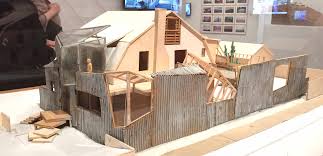
O nosso texto da próxima terça feira será 'The Mandarin Question' de Katherine Vaz - tenho estas perguntas para que considerem em relação ao conto curto.
1) O toque é um motivo recorrente nesta história. Como podemos ler as várias instâncias em que o toque é construído como uma ação poderosa, e os seus efeitos subsequentes? Assuntos para considerar pode ser toque como ponto de contraste às faltas de afeição/família, ligação física e (in)corporalidade.
2) Os pais ausentes da narradora lançam uma sombra sobre esta narrativa em muitas maneiras. Como podemos considerar as semelhanças entre os desejos da narradora e os da sua mãe, especialmente em relação ao dicotomia entre imaginação/realidade sublinhado na revelação da Tia Clara sobre o comportamento da sua irmã? Como podemos interpretar o processo de criação de identidade própria da narradora em relação de falta de raízes (não só dos seus pais, mas também como uma criança da diaspora)?






